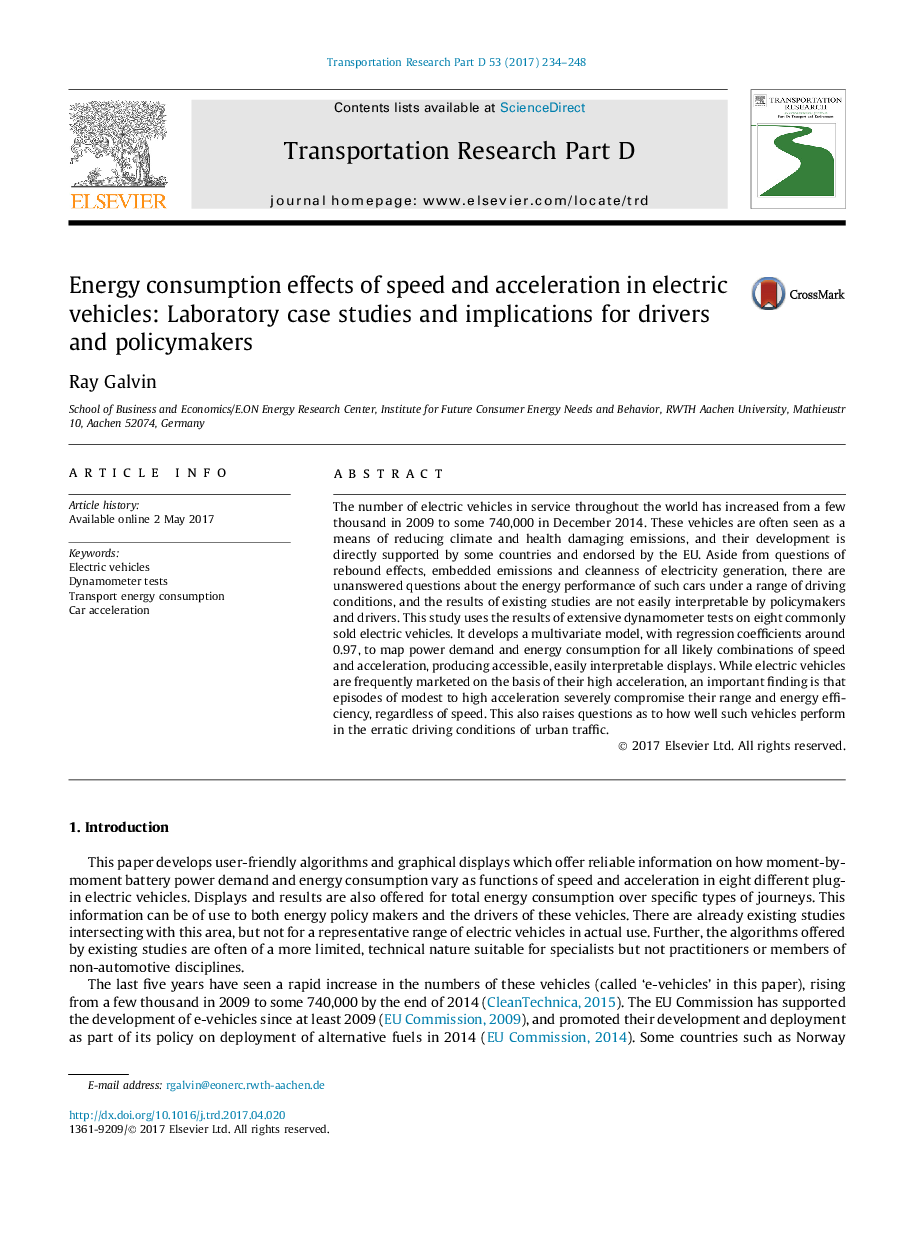| Article ID | Journal | Published Year | Pages | File Type |
|---|---|---|---|---|
| 5119429 | Transportation Research Part D: Transport and Environment | 2017 | 15 Pages |
â¢Speed and acceleration characteristics of 8 popular E-vehicles are modeled.â¢The models predict power demand for any speed and acceleration.â¢Modest acceleration typically increases instantaneous power demand 5-fold.â¢Energy efficiency falls heavily with erratic speeds, as in urban driving.â¢Accessible displays of energy consumption are offered for policy and drivers.
The number of electric vehicles in service throughout the world has increased from a few thousand in 2009 to some 740,000 in December 2014. These vehicles are often seen as a means of reducing climate and health damaging emissions, and their development is directly supported by some countries and endorsed by the EU. Aside from questions of rebound effects, embedded emissions and cleanness of electricity generation, there are unanswered questions about the energy performance of such cars under a range of driving conditions, and the results of existing studies are not easily interpretable by policymakers and drivers. This study uses the results of extensive dynamometer tests on eight commonly sold electric vehicles. It develops a multivariate model, with regression coefficients around 0.97, to map power demand and energy consumption for all likely combinations of speed and acceleration, producing accessible, easily interpretable displays. While electric vehicles are frequently marketed on the basis of their high acceleration, an important finding is that episodes of modest to high acceleration severely compromise their range and energy efficiency, regardless of speed. This also raises questions as to how well such vehicles perform in the erratic driving conditions of urban traffic.
